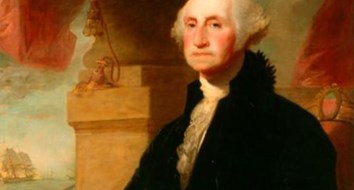Los Angeles Mayor Eric Garcetti created Vision Zero in 2015 in an effort to reduce non-driver traffic fatalities, especially pedestrian deaths. Its goals were to cut non-driver fatalities by 20 percent by 2015, 50 percent by this year, and 100 percent by 2025. Following that vision, the City Council adopted Mobility Plan 2035, a 20-year initiative to remove automobile lanes and make more room for bus and bike lanes to upgrade pedestrian and cyclist safety.
Rising Fatal Crashes
How is it doing so far? As Laura J. Nelson described it in the Los Angeles Times on February 6, the city just had “[a]nother year of lackluster progress for Vision Zero.”
Nelson reported that since the policy's inception, non-auto driver fatalities have surged.
Since Vision Zero was launched in 2015, the number of pedestrians, vehicle occupants, bicyclists and motorcyclists killed annually in traffic crashes has risen 33%. Fatalities surged in 2016 from 183 to 253, and have fallen 3.6% since then.
From its 2015 inception to its first interim benchmark of a 20 percent reduction by 2017, Ryan Fonseca reported that "overall traffic deaths rose about 32 percent and the number of pedestrians killed surged from 74 to 134—an increase of more than 80 percent."
However that is spun, it is hard to call it a success. But Garcetti spokesperson Anna Bahr announced, “We will continue to pursue our goal of zero traffic deaths until we meet that mark.” Doubling down on underwhelming performance, however, while hardly uncommon in political rhetoric, must be questioned. And that is before incorporating another way Vision Zero’s approach will kill more people.
That added congestion would be especially life-threatening in cases of sudden cardiac arrest, which requires rapid medical intervention to save a life.
Those are people who will be killed by the approach adopted to reduce accidents, rather than by auto accidents. That approach is to increase traffic congestion by eliminating automobile lanes. But that would slow emergency response times and endanger the lives of others.
The city’s EIR for Mobility Plan 2035 reported that it would impose “unavoidable significant adverse impacts” on traffic. It would make 36 percent of intersections heavily congested (graded F) during evening rush hours—twice the previous number, and far beyond the 22 percent anticipated without the plan. And even more motor vehicles trapped in gridlock cannot clear the way for ambulances or fire trucks responding to emergency calls.
Medical Response Times
That added congestion would be especially life-threatening in cases of sudden cardiac arrest, which requires rapid medical intervention to save a life.
Even delays measured in seconds can have deadly consequences.
"A one-minute decrease in the call-to-shock time increases the odds of survival by 57 percent," Mayo Clinic physician Roger White told USA Today.
Shortening the response time by three minutes improves a victim’s chance of surviving almost four-fold. And with the American Heart Association reporting over three hundred and fifty thousand American cases of out-of-hospital cardiac arrest (since while in a hospital, traffic congestion will not keep you from receiving treatment rapidly) in 2018, and that only about 46 percent of people who experience an OHCA get the immediate help that they need before professional help arrives, the magnitude of the effects will not be insignificant.
To Illustrate, USA Today estimated in 2003 that a 14 percent increase in survival rates for sudden cardiac arrest in Los Angeles would have saved 104 additional lives (out of 739 incidents)—greater than the number of pedestrians killed in the city in some years. Therefore, even if Mobility Plan 2035 were to eliminate all such pedestrian traffic fatalities, a goal we seem to be receding from rather than approaching by further snarling already snarled traffic, more residents could die from delayed sudden cardiac arrest treatment. And incorporating delays for other emergencies would only add to the price in human life.
Randal O’Toole, an economist who has written extensively on urban transportation, has recapped studies of the unpleasant tradeoffs as showing
for every pedestrian whose life might be saved by traffic calming, more than 30 people are likely to die due to delays in fire trucks and paramedics.
And it could be worse. Ronald Bowman, former project director for the National Bureau of Standards laboratory in Boulder, Colorado, found that one traffic mitigation plan there cost 85 lost lives for each life saved.
The traffic safety proposals initiated by Los Angeles’ Mayor Garcetti and the City Council are already huge failures, judged by the interim benchmark they set for themselves. And there is little real hope that “more of the same” will transform them into successes. In fact, that could increase fatalities from both pedestrian-involved traffic accidents (as it seems to have so far) and those who suffer sudden cardiac arrest and other emergencies, because worsening traffic congestion even further would extend emergency vehicle delays even more widely. Perhaps instead of moving forward, city leaders should take more seriously their mandate to base decisions on “substantial evidence,” since they are failing on their own terms, even while ignoring other deaths their proposals would cause.





